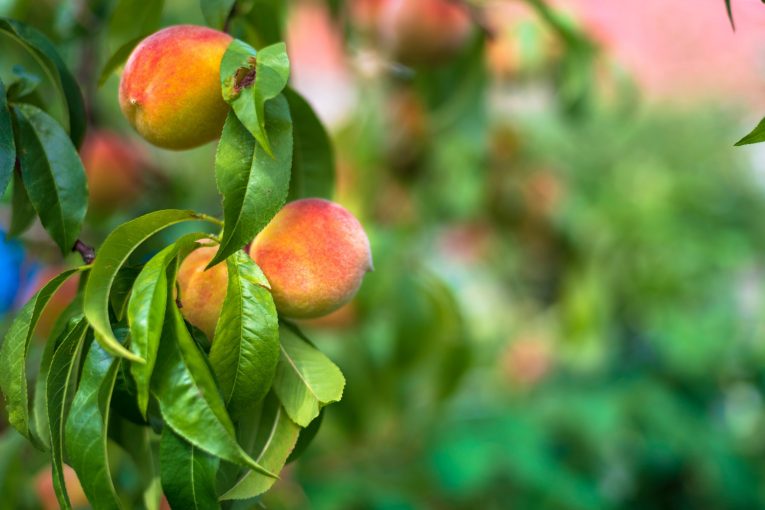

Cutting-edge technology will save breeders time, money and risk to crops
Davis’ push for high tech economic development got a big boost this week from a company already located in Davis which helped draw the new Ag-tch company, MyFLoraDNA to Davis.
The cutting edge company uses a single DNA genetic test to improve breeders’ profits. This week they announced they will be opening in the heart of the most fertile land in the U.S., the Sacramento Valley.
. MyFloraDNA specializes in testing fruit and nut trees to help breeders create new varieties of crops to battle climate change, provide more nutrition and produce a greater yield. Nut and fruit trees are major cash crops in California, contributing $21.7 billion to the state’s economy annually according to the California Department of Food and Agriculture.
“This is revolutionary for the nut and fruit industry – because it takes years, up to 10 years sometimes, for these trees to mature. With our simple test, breeders get an answer in just days on what varieties are incorporating the genes associated with the traits they are looking for,” said Angel Fernandez i Marti, CEO & Co-Founder of MyFloraDNA.
MyFloraDNA will allow breeders to save money, time and land. Classical breeding processes cost hundreds-of-millions of dollars, but a simple genome analysis will be game-changing for this multi-billion- dollar industry. Customers can simply go onto MyFloraDNA.com and create a profile of the new variety traits they are seeking, including drought-resistant, disease-resistant fruits that provide more flavor or nuts that contain more fatty acids.
dollar industry. Customers can simply go onto MyFloraDNA.com and create a profile of the new variety traits they are seeking, including drought-resistant, disease-resistant fruits that provide more flavor or nuts that contain more fatty acids.
“We have a food crisis around the world, and our product is going to help breeders and farmers have a more abundant supply and help them predict the growth of their crops,” said COO & Co-Founder Javier Buendia Solis.
A sample collection kit, similar to 23andMe, allows the breeder to collect leaves from their samples and send it directly to MyFloraDNA. Breeders then receive an automated report in 72 hours. These custom genome scans allow them to make informed and educated decisions on their next steps in selecting and growing their crops.
California almond farmers alone spend $1.8 billion annually on expenses including pollination, irrigation and pesticides. MyFloraDNA can cut those costs by providing faster analysis on the crops to accelerate and optimize the cultivation process.
“There is a plethora of almond, walnut, orange, lemon and peach and grape breeders in this region that will benefit from our product. We aren’t stopping with fruit and nut trees. Hopefully, by next year, our portfolio will increase to more crops,” said Fernandez i Marti.
The Greater Sacramento Economic Council assisted MyFloraDNA with its location search. The nut and fruit tree company is located at the UC Davis-HM.CLAUSE Life Science Innovation Center, a business incubator that provides support to turn ideas into businesses. This location will allow the founders of MyFloraDNA access to shared lab space alongside other startups.
“MyFloraDNA exemplifies why the UC Davis-HM.CLAUSE Life Science Innovation Center was established, to create an environment that nurtures innovation, fosters creativity and inspires synergy by building a strong partnership with universities, public and private sectors,” said Vincent Asiago, Director R&D Portfolio and Innovation at HM.CLAUSE.
The connection with UC Davis and faculty and proximity to surrounding universities including Sacramento State and to the San Joaquin Valley will facilitate their growth and grant them easy access to talent in genomics, data analysis, communications and marketing.
“UC Davis and the City of Davis are the perfect space for this game-changing company to grow because the city is an innovation hub for agtech with hundreds of companies’ products used globally,” said Barry Broome, President & CEO of the Greater Sacramento Economic Council.

I truly wish I could take the stated intentions of this infomercial at face value. The potential to improve crops at a faster rate is truly mind-blowing. But what if the (hidden and actual) goal is to get a peach to stay on the shelf for five years at the expense of taste? I’m mostly full of apprehension and a desire to see this business venture fail. I see no accountability to what criteria we as regular people, consumers of the fruit, would see as the primary goals of plant improvements. I fear, yes you can call it fear, that we are getting onto a higher velocity conveyer belt to Hell as we did with the typical tomato “improvements” that made the fruit easier to ship, etc., and took the taste out of it.
Couldn’t figure out what this article was even doing here. Now we know.